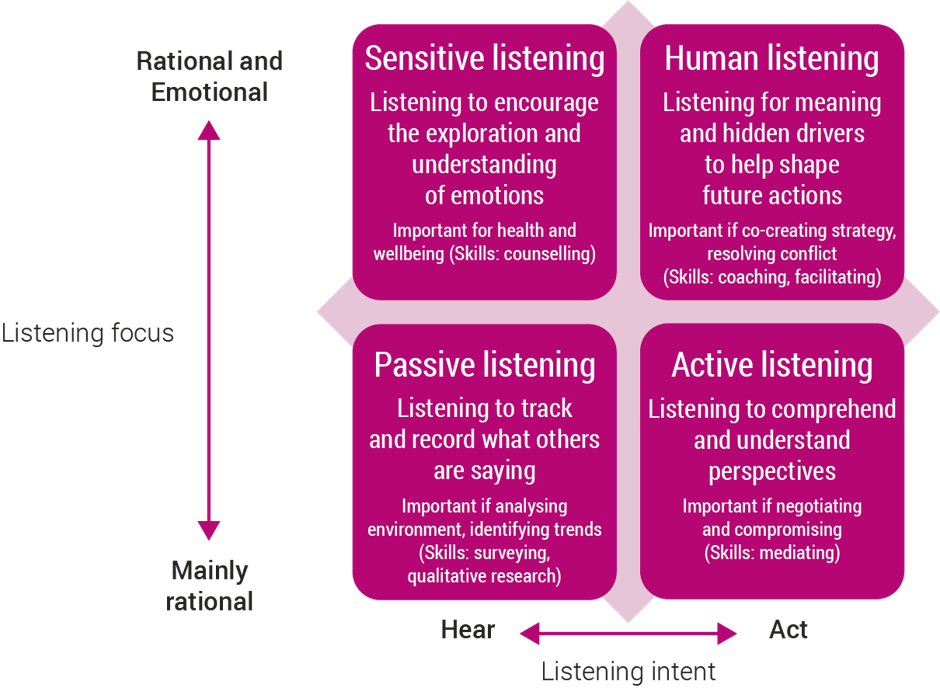
Collaborative solution development through effective listening is a key component of problem-solving and decision-making in various settings, from business to community initiatives. It involves actively engaging with stakeholders, understanding their perspectives, and collectively arriving at solutions that address complex challenges. Here’s a step-by-step approach to developing solutions collaboratively through effective listening:
Step 1: Define the Problem
- Clarify the Problem: Ensure that all participants have a clear understanding of the problem or challenge that needs to be addressed. Use concise language and provide context.
Step 2: Identify Stakeholders
- Identify Stakeholders: Identify and invite relevant stakeholders who have a vested interest in the problem or who can contribute valuable insights.
Step 3: Establish a Facilitative Environment
- Create a Safe Space: Foster an open and non-judgmental environment where all participants feel comfortable sharing their ideas and concerns.
Step 4: Active Listening
- Active Listening: Encourage participants to actively listen to each other. This involves giving their full attention, avoiding interruptions, and using non-verbal cues (nodding, eye contact) to show engagement.
Step 5: Share Perspectives
- Share Perspectives: Provide each stakeholder with an opportunity to express their viewpoint on the problem. Use open-ended questions to initiate discussions.
Step 6: Generate Ideas
- Brainstorm Ideas: Facilitate a brainstorming session where participants generate a wide range of ideas, solutions, and potential approaches to solving the problem.
Step 7: Reflect and Clarify
- Reflect and Clarify: After generating ideas, use reflective listening to summarize and clarify what has been discussed. Ensure that everyone’s contributions are understood.
Step 8: Evaluate and Prioritize
- Evaluate and Prioritize: Collaboratively assess the feasibility, impact, and potential risks of each idea. Prioritize solutions based on consensus.
Step 9: Develop Action Plans
- Develop Action Plans: Outline detailed action plans for implementing the chosen solutions. Define responsibilities, timelines, and necessary resources.
Step 10: Consensus Building
- Consensus Building: Encourage participants to reach a consensus on the selected solutions. Address any remaining concerns or objections through open dialogue.
Step 11: Document the Process
- Document the Process: Keep thorough records of the collaborative solution development process, including ideas, discussions, and decisions made.
Step 12: Implement and Monitor
- Implement and Monitor: Put the action plans into motion and regularly monitor progress. Ensure that all stakeholders remain engaged and committed to the implementation.
Step 13: Feedback and Adaptation
- Feedback and Adaptation: Create mechanisms for ongoing feedback from stakeholders and adjust the solutions as needed based on real-world results.
Benefits of Collaborative Solution Development
- Diverse Perspectives: Collaboration brings together diverse viewpoints and expertise, leading to more comprehensive solutions.
- Ownership and Buy-In: When stakeholders are actively involved in developing solutions, they are more likely to take ownership and be committed to their success.
- Innovation: Collaborative processes often lead to innovative solutions that may not have been identified through individual efforts.
- Enhanced Problem-Solving: Multiple perspectives and insights improve the quality of problem-solving and decision-making.
Challenges and Tips
- Conflict Resolution: Address conflicts constructively and guide discussions toward resolution.
- Balancing Participation: Ensure that all participants have an equal opportunity to contribute, and manage dominant voices.
- Time Management: Keep the process on schedule to prevent discussions from becoming lengthy and unfocused.
Continuous Improvement
- Encourage continuous improvement by regularly evaluating and refining the collaborative solution development process.
In conclusion, developing solutions collaboratively through effective listening is a powerful approach to tackling complex challenges. By actively engaging stakeholders, listening to their perspectives, and fostering open dialogue, organizations and teams can arrive at solutions that are more comprehensive, innovative, and aligned with the needs of all stakeholders.